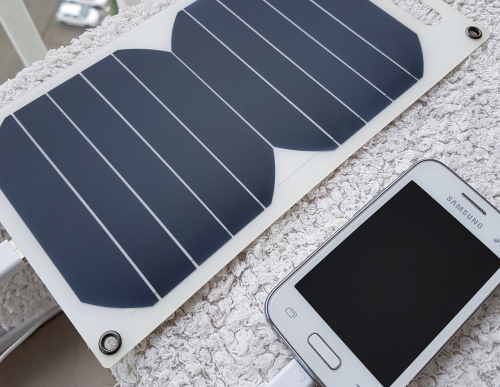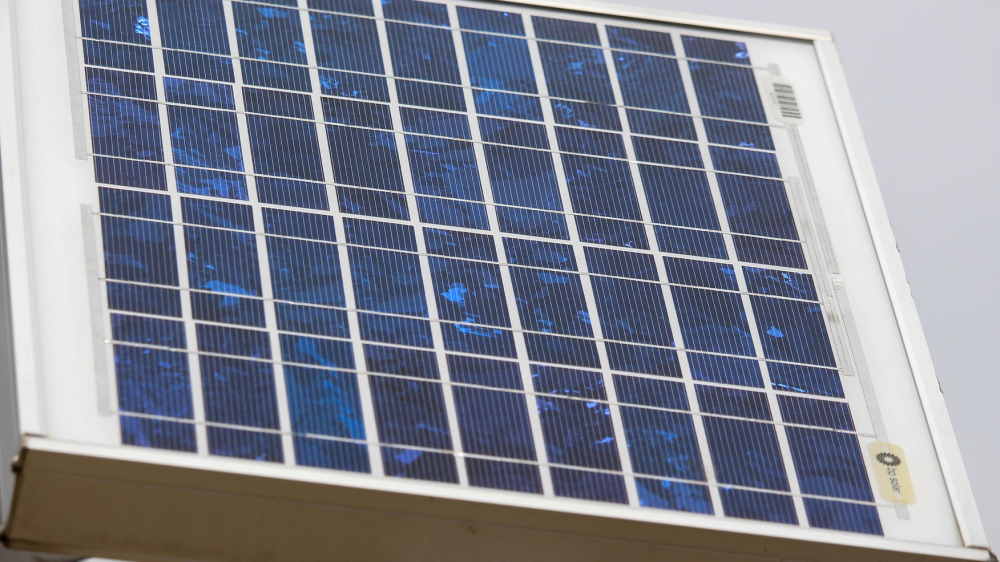A solar panel, also known as a photovoltaic (PV) panel, is a device that converts sunlight into electricity. It is made up of many small units called solar cells that are connected together to form a larger panel.
When sunlight hits the solar cells, it excites the electrons in the cells, causing them to flow and generate an electrical current. This electrical current can then be used to power homes, businesses, and other electronic devices.
The power generated by solar panels can vary depending on a number of factors, such as the size and efficiency of the panel, the angle and direction of sunlight, and the amount of shading the panel receives. Typically, a single solar panel can produce around 250-400 watts of power, although larger panels are also available.
For homes, solar panels are often installed on the roof or in a sunny area of the property. The power generated by the panels can be used to power appliances and electronics directly or stored in batteries for later use. In some cases, excess power generated by the panels can be sold back to the grid, providing homeowners with additional income.
We’ve written about solar panels for small homes and maybe you should read about the topic.
Differences between 12V and 18V panels are
The main difference between 12V and 18V solar panels is the voltage output they produce.
A 12V solar panel typically produces an output of around 12 volts, which is suitable for charging 12V batteries and powering low voltage devices like small lights or fans. These panels are often used in small off-grid systems or in portable solar-powered devices.


On the other hand, an 18V solar panel typically produces an output of around 18 volts, which is suitable for charging 12V and 24V batteries and powering larger devices like refrigerators or water pumps. These panels are often used in larger off-grid systems or in grid-tied systems where excess power can be fed back into the grid.
It’s worth noting that the actual voltage output of a solar panel can vary depending on factors like temperature and shading. Additionally, the power output of a solar panel is determined not only by its voltage but also by its current output, which is measured in amps. A higher voltage panel may not necessarily produce more power than a lower voltage panel with a higher current output. Ultimately, the choice between a 12V or 18V solar panel will depend on the specific requirements of the system or device being powered.
What other solar panel volts are there?
There are a variety of solar panel voltages available on the market, each with its own specific applications. Here are a few examples:
- 24V solar panels: These panels typically produce an output of around 24 volts and are used in larger off-grid systems or in grid-tied systems that require higher voltage inputs.
- 36V solar panels: These panels typically produce an output of around 36 volts and are commonly used in grid-tied systems to maximize power output.
- 48V solar panels: These panels typically produce an output of around 48 volts and are used in larger off-grid systems or in grid-tied systems that require high voltage inputs.
- Flexible solar panels: These panels come in a range of voltages and are designed to be flexible and lightweight, making them ideal for portable solar-powered devices like camping equipment or boats.
- Building Integrated Photovoltaic (BIPV) panels: These panels are integrated directly into the design of a building and can come in a variety of voltages to meet the specific needs of the building’s electrical system.
It’s important to note that the voltage of a solar panel is just one factor to consider when choosing the right panel for a particular application. Other factors to consider include the size and efficiency of the panel, the type of solar cells used, and the amount of sunlight available in the area where the panel will be installed.
Conclusion
In conclusion, solar panels are devices that convert sunlight into electricity and are made up of small units called solar cells. The voltage of a solar panel can vary depending on the specific application and can range from 12V panels that are suitable for charging small batteries and powering low voltage devices to higher voltage panels that are used in larger off-grid systems or grid-tied systems that require higher voltage inputs.
Other types of solar panels include flexible panels and Building Integrated Photovoltaic (BIPV) panels, which are integrated directly into the design of buildings. When choosing a solar panel, it’s important to consider factors like size, efficiency, and the amount of sunlight available in the installation area, in addition to voltage.
